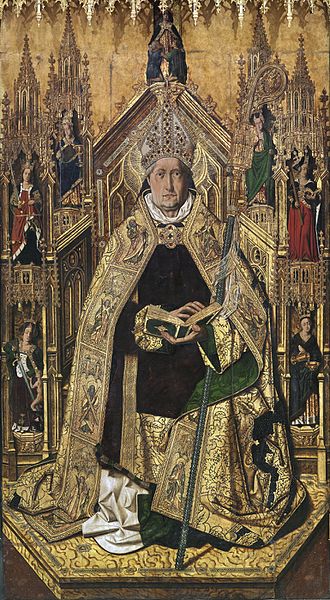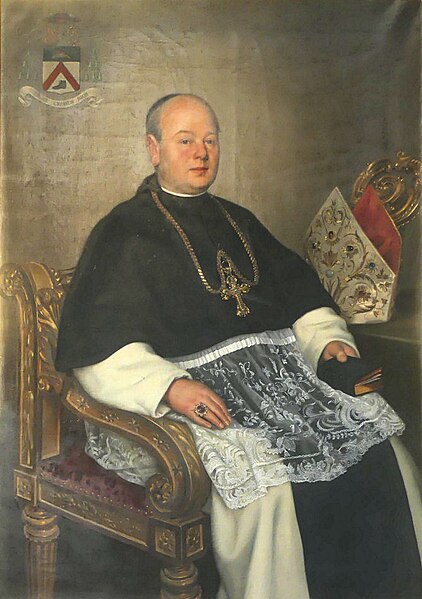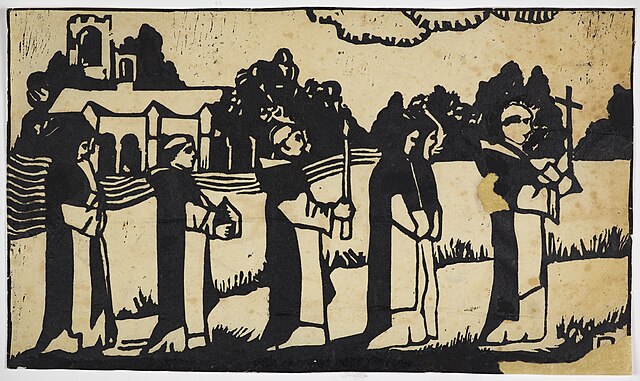Abbot is an ecclesiastical title given to the head of an independent monastery for men in various Western Christian traditions. The name is derived from abba, the Syriac form of the Hebrew ab, and means "father". The female equivalent is abbess.
St. Dominic of Silos enthroned as abbot (Hispano-Flemish Gothic 15th century)
Coptic icon of Saint Pachomius, the founder of cenobitic monasticism
Carving of Saint Benedict of Nursia, holding an abbot's crozier and his Rule for Monasteries (Münsterschwarzach, Germany)
Thomas Schoen, abbot of Bornem Abbey
A monastery is a building or complex of buildings comprising the domestic quarters and workplaces of monastics, monks or nuns, whether living in communities or alone (hermits). A monastery generally includes a place reserved for prayer which may be a chapel, church, or temple, and may also serve as an oratory, or in the case of communities anything from a single building housing only one senior and two or three junior monks or nuns, to vast complexes and estates housing tens or hundreds. A monastery complex typically comprises a number of buildings which include a church, dormitory, cloister, refectory, library, balneary and infirmary, and outlying granges. Depending on the location, the monastic order and the occupation of its inhabitants, the complex may also include a wide range of buildings that facilitate self-sufficiency and service to the community. These may include a hospice, a school, and a range of agricultural and manufacturing buildings such as a barn, a forge, or a brewery.

The Monastery of Varlaam in Meteora, Thessaly, Greece.
The Plan of Saint Gall, the ground plan of an unbuilt abbey, providing for all of the needs of the monks within the confines of the monastery walls
Procession monastique
Taktsang Palphug Monastery aka Paro Taktsang aka Tiger's Nest, July 2016 13








